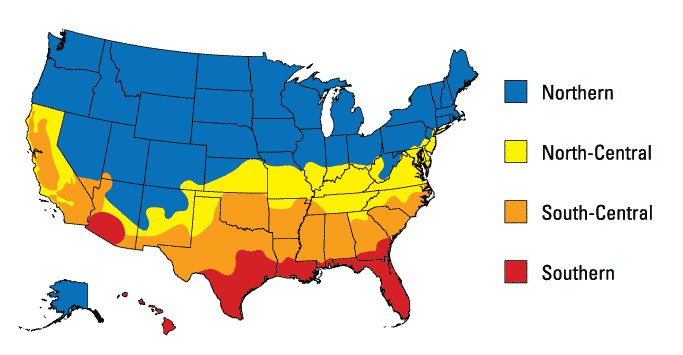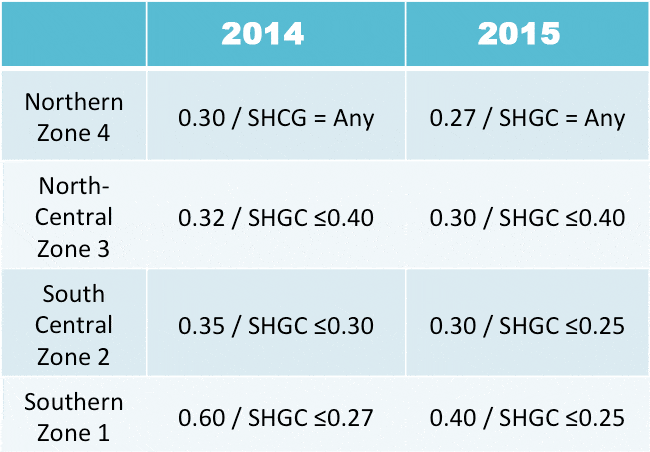Air infiltration or air leakage ratings are an important factor to consider when comparing energy efficient replacement windows. In this post we’ll look into how these ratings are often misinterpreted, what is considered to be a pretty good rating and what to watch out for as you’re comparing the options.
To understand the rating you’ll first need to understand what the number actually represents. The unit of measure for air infiltration is cubic feet per minute per square foot. That is how many cubic feet of air can pass through the window in a minute at a constant 25 mph wind divided by the total window area. I know, the unit itself is a little tricky.
How are air infiltration and air leakage ratings misinterpreted?
Manufacturers are always looking for a way to tell folks that their products are “better” than another. Focusing on air infiltration ratings is an increasingly common way to do that.
For example, the manufacturer Soft-lite uses a chart in their Elements window brochure that some customers could easily misinterpret. It tries to put air infiltration in terms of how many milk jugs or pop cans of air can get through the widow. Unfortunately, it clearly leaves out the size and the style of the window being tested.
Since the unit of measure for these ratings has the total window area in the denominator the size of the window affects the rating. There are also several options offered by manufacturers that do change the ratings. For one company to say that they’re rating is XX is oversimplifying the situation.
It’s also worthwhile to consider how often your home is hit with a constant 25 mph wind. I’m not much of a sailor, but I’m aware of the wind enough to know that doesn’t happen by my house very often.
Manufacturers do this to try to separate themselves from their competition and there’s noting wrong with that, but trying to say a 0.01 difference in anything will make or break a project is pretty silly.
So what is a good air leakage or air infiltration rating?
Obviously the rating of how much air can get through the window is important. The American Architectural Manufacturers Association (AAMA) says that any residential window that achieves a rating below 0.30 cfm/sqft meets the requirements for their gold rating. This is the best rating they offer. This is also the minimum air infiltration rating for the energy star program. In fact, many of us in this business expected this minimum rating to be reduced with the 2015 energy star program, but it was not. I expect we will see changes to this standard in the years to come.
High quality vinyl replacement windows consistently achieve ratings MUCH lower than this standard. For a vinyl double hung window anything below 0.05 is pretty darn good. Casement windows and picture windows are typically even lower while sliding windows are often the worst of the bunch.
On the other hand, wood, fiberglass and composite windows typically cannot achieve as tight of a seal. These products typically have much higher air infiltration ratings. The fact that wood, fiberglass and composite windows typically have substantially worse air infiltration or air leakage ratings should be weighed when considering those options.
What should I watch out for when looking at air infiltration ratings?
Typically it is wise to avoid putting too much weight into statements from folks who are drastically over simplifying things. For example if a salesperson tells you his windows achieve a rating of 0.01 and that everything else is worse and any other window will make your house drafty he’s not telling you the truth (he’s probably the guy using the chart above).
Remember for vinyl windows anything below 0.05 is pretty darn good any you’ll likely never know the difference. In fact, the National Fenestration Rating Council or NFRC doesn’t even give ratings below 0.10 because they don’t believe the air infiltration measurements are accurate below that point. If the major independent testing body in our industry doesn’t recognize ratings below 0.10 that’s probably a good sign that you don’t need to worry about it below that point.
Important points to remember:
- Air infiltration or air leakage is just one factor to consider as you sort through window ratings
- It’s pretty easy to compare the differences between models
- Lower is better, but below a certain point there is not much difference
- Wood, composite and fiberglass options will typically have higher ratings than high quality vinyl
- All types of windows are available below the 0.30 threshold
- Not all types are available below the 0.10 level
If you’re looking for a window company right now, the best advice we have is to check out our list of the best window companies all over the country. You can find it right here.




